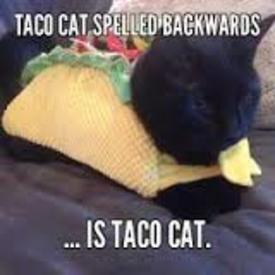Why is Aquastar salmon so low calorie?

aubiefan122013
Posts: 21 Member
Hi all,
I have a question, either for any nutritionists reading this or someone that just knows more than I do. I've been buying Aquastar salmon fillets (wild-caught, according to the package), with the calories listed as 80 per 4 oz serving. This is about half the calories of what I see quoted for generic salmon on food trackers, even when I specifically search for wild salmon (which can be lower calorie as some farmed fish have higher fat content). Is this a really obvious example of mislabeling, or is there something I'm missing here that explains it? The fillets are skin-on, but I don't think that would account for a 50% reduction in calories.
Thanks!
I have a question, either for any nutritionists reading this or someone that just knows more than I do. I've been buying Aquastar salmon fillets (wild-caught, according to the package), with the calories listed as 80 per 4 oz serving. This is about half the calories of what I see quoted for generic salmon on food trackers, even when I specifically search for wild salmon (which can be lower calorie as some farmed fish have higher fat content). Is this a really obvious example of mislabeling, or is there something I'm missing here that explains it? The fillets are skin-on, but I don't think that would account for a 50% reduction in calories.
Thanks!
0
Replies
-
A lot of those frozen boxed salmon are sucked dry of there oils, and the oils are sold to supplements companies.0
-
This content has been removed.
-
According to the USDA, that's actually correct for Pacific Cod.
USDA, Fish, cod, Pacific, raw (may have been previously frozen)0 -
Depending on where caught, different varieties of salmon have different levels of oil, which would be a contributing factor in their caloric content. However, it's very hard to nail down precisely what an agricultural, or more so, a wild animal product is going to have for calories. The best they can do is randomly select some of the product, have it tested for caloric content, then print the average on the box. Also, who knows what is involved in the processing of this salmon vs any other brand of salmon.
Best bet? Get a rod and go catch your own 0
0 -
yes, I have been buying it too after a recent visit to the states. strange half the usual calories, 1/4 of the usual fat and half of the protein of generic wild or farmed salmon...how is it possible?0
-
Derf_Smeggle wrote: »According to the USDA, that's actually correct for Pacific Cod.
USDA, Fish, cod, Pacific, raw (may have been previously frozen)
we are talking Salmon not Cod.0 -
carlosmitchell16 wrote: »Derf_Smeggle wrote: »According to the USDA, that's actually correct for Pacific Cod.
USDA, Fish, cod, Pacific, raw (may have been previously frozen)
we are talking Salmon not Cod.
I think the point is that the nutritional info being given for the salmon is correct for cod. Ergo, either the packet info is for the wrong fish, or the fish in the packet is not actually salmon.0 -
Read this, since one person states that it is indeed caught in Alaska, but possibly FARM raised in china according to label.
http://www.obesityhelp.com/forums/ds/4432481/OT-Dont-know-what-my-frozen-salmon-packages-words-mean/
Are you getting this product from a reputable store? Is this from Aldi? Fish processed in China makes my stomach turn. They even closed schools last week in Bejing b/c they could not see due to pollution.
I would leave meat processed in China alone.
Another site stated that their cat would not even eat it. Good salmon tastes fatty (good omega 3's). And costs at least $7 a pound.0 -
Alatariel75 wrote: »carlosmitchell16 wrote: »Derf_Smeggle wrote: »According to the USDA, that's actually correct for Pacific Cod.
USDA, Fish, cod, Pacific, raw (may have been previously frozen)
we are talking Salmon not Cod.
I think the point is that the nutritional info being given for the salmon is correct for cod. Ergo, either the packet info is for the wrong fish, or the fish in the packet is not actually salmon.
There was a similar post and from what I got it was a different type of salmon. There is a variance of nutritional info between different types.
ETA - it still looks liek 80 for 4 oz is still low for the type (Keta)0 -
It is not possible to reconcile the Aquastar nutrition label with the entries for salmon in the USDA database. The lowest calorie salmon in the USDA data base, wild or farmed, is "salmon, chum, raw" at 120 calories/100g, or about 136 calories for 4 oz, so it's hard to reconcile that with 80 calories. A look at the Aquastar nutrition label (below) reveals two surprises which explain the difference. First, the fat content is given as 1.5 g for a 113 g portion, or about 1.3% by weight. The lowest fat content of any salmon in the USDA data base is 3.7%, suggesting that this salmon has in fact been processed to remove fat. The second anomaly is that the protein content is given a 16 g, or about 14% by weight. There are 12 raw salmon entries in the USDA data base, and their protein contents are very consistent, ranging from 20 to 22%. Unless the skin accounts for 40-60% of the weight of the Aquastar product, and is included in the 113 g portion weight but does not contribute to the macronutrient content, that would suggest to me that water was added to the salmon to increase its weight.

0 -
LOL
I just popped back into this thread and see the error I made. Thank you for pointing that out, Carlosmitchell16. I goofed.0 -
This discussion has been closed.
Categories
- All Categories
- 1.4M Health, Wellness and Goals
- 398.1K Introduce Yourself
- 44.7K Getting Started
- 261K Health and Weight Loss
- 176.4K Food and Nutrition
- 47.7K Recipes
- 233K Fitness and Exercise
- 462 Sleep, Mindfulness and Overall Wellness
- 6.5K Goal: Maintaining Weight
- 8.7K Goal: Gaining Weight and Body Building
- 153.5K Motivation and Support
- 8.4K Challenges
- 1.4K Debate Club
- 96.5K Chit-Chat
- 2.6K Fun and Games
- 4.8K MyFitnessPal Information
- 12 News and Announcements
- 21 MyFitnessPal Academy
- 1.5K Feature Suggestions and Ideas
- 3.2K MyFitnessPal Tech Support Questions








